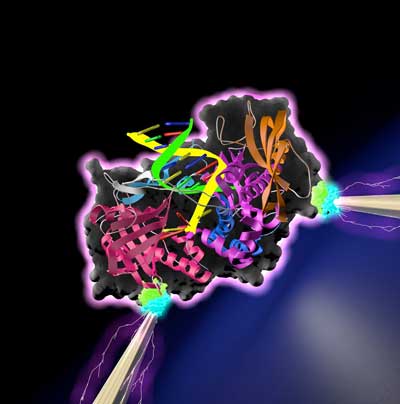Nanowerk October 31, 2019
A team of researchers at the Arizona State University describes techniques for affixing the DNA polymerase to electrodes to generate strong conductance signals by means of two specialized binding chemicals biotin and streptavidin. When one electrode was functionalized using this technique, small conductance spikes were generated as the DNA polymerase successively bound and released each nucleotide, like a grasping hand catching and releasing a baseball. When both electrodes were outfitted with streptavidin and biotin, much stronger conductance signals, measuring 3-5 times as large, were observed. The new method hopes to take a different approach, using the polymerase’s own speed-reading expertise to provide a readout of nucleotides through conductance spikes specific to each of the 4 DNA bases. While the role of protein conductance in nature remains a matter of mystery and speculation, harnessing this phenomenon for human use will likely open new avenues for biochemical sensing devices, smart industrial production and new innovations in medical diagnostics…read more. Video

Binding of nucleotides by the polymerase causes conductance spikes, which may be characteristic of the specific molecules bound by the polymerase. Credit: Image: Lindsay lab